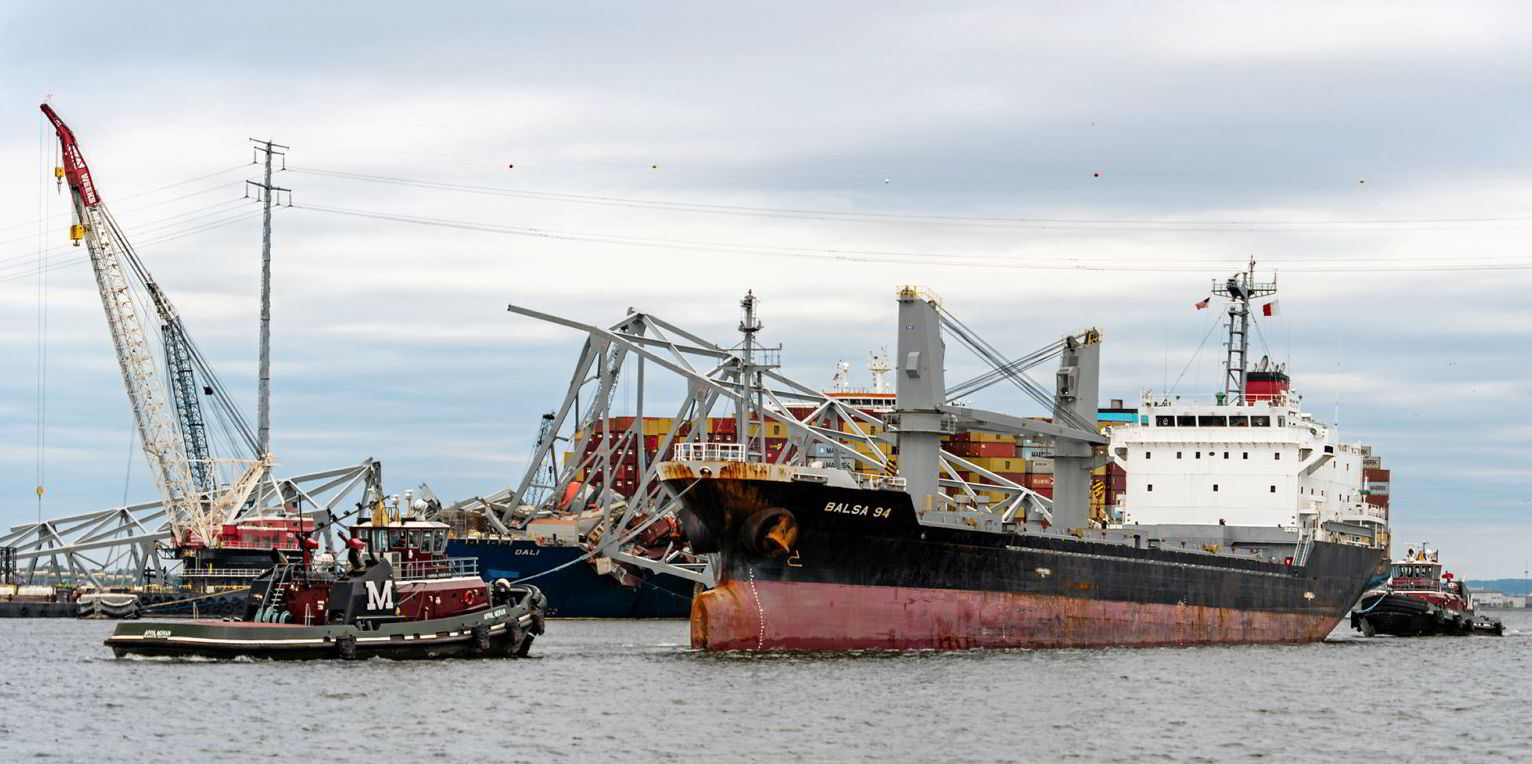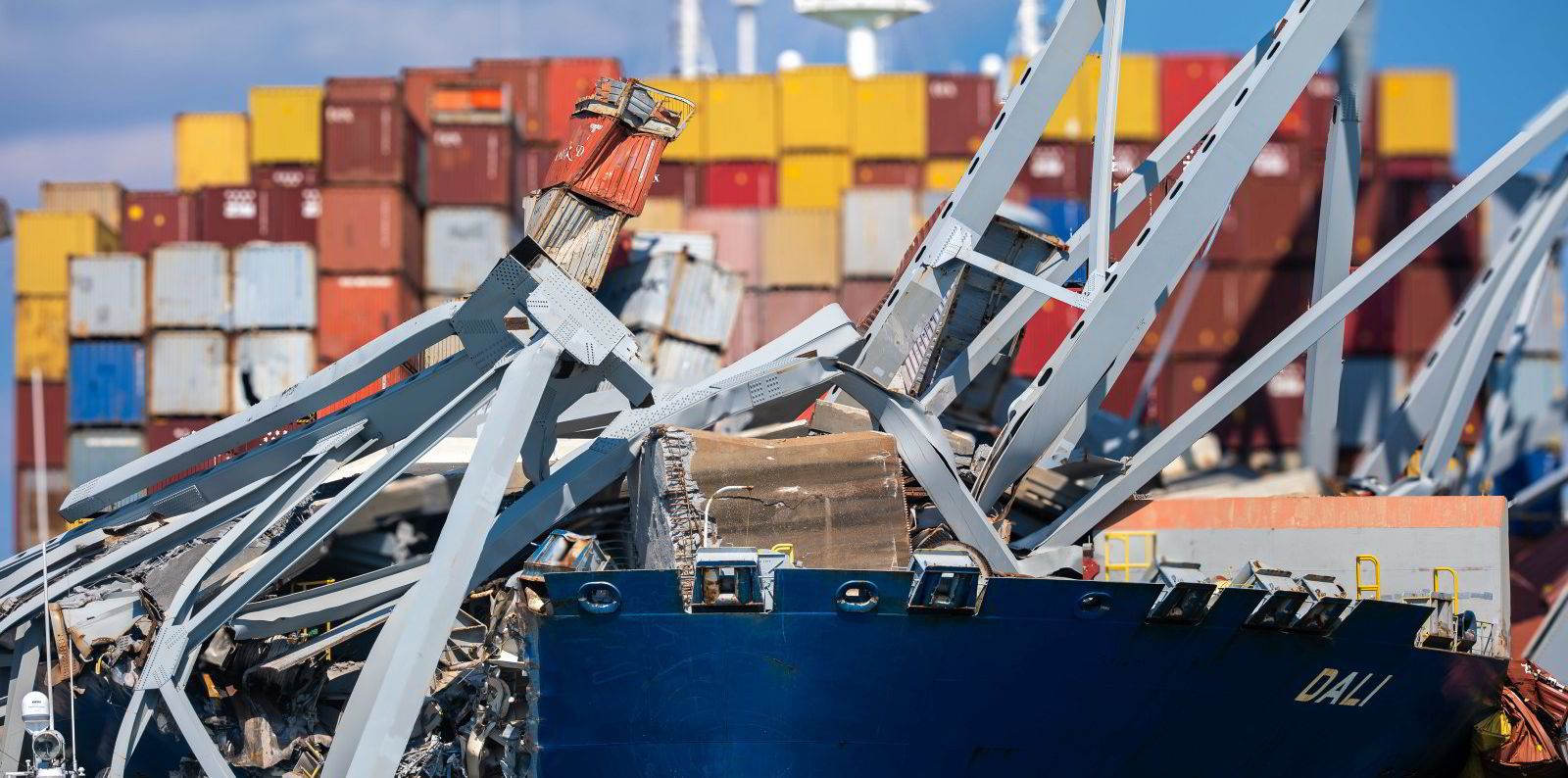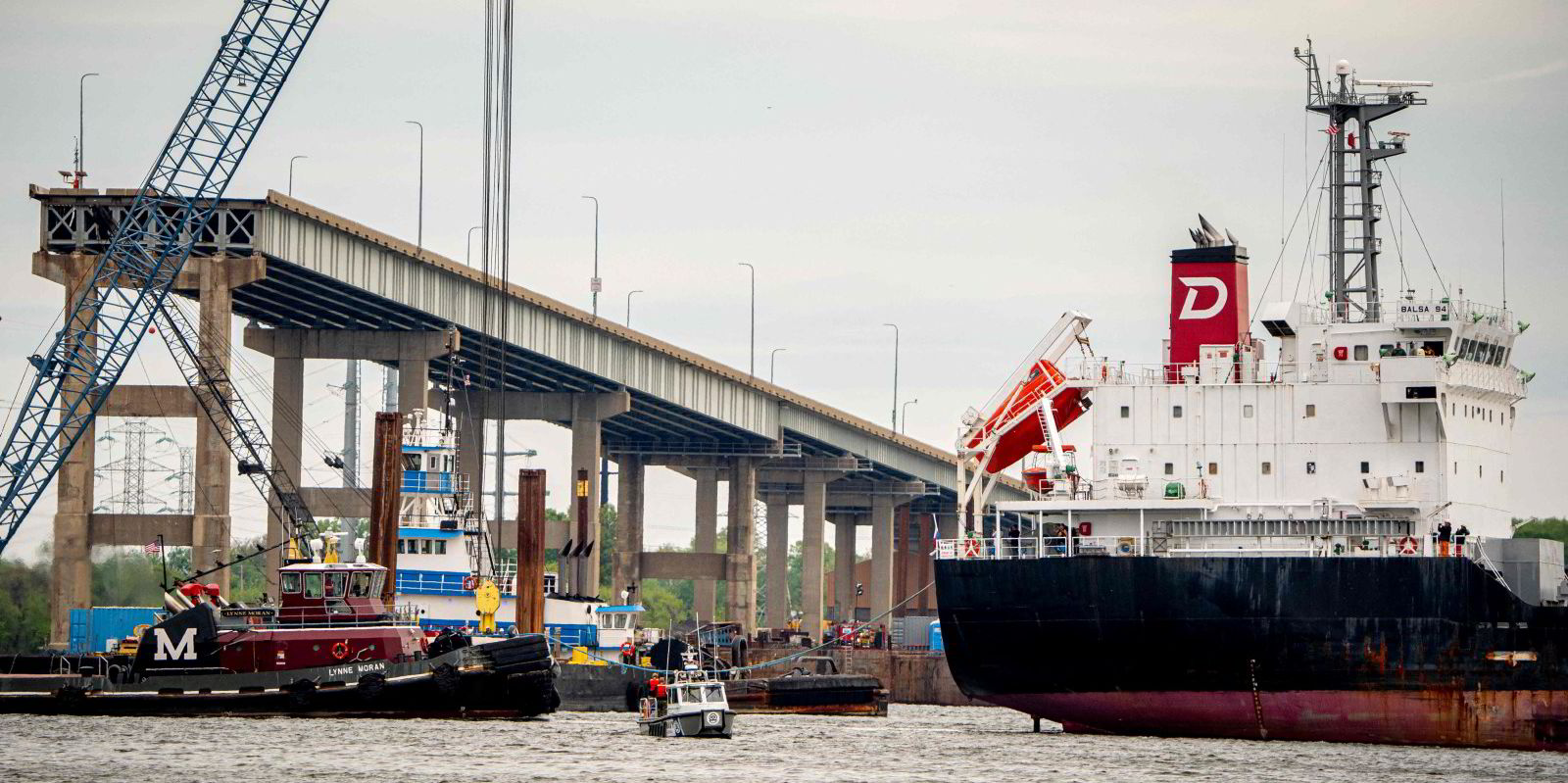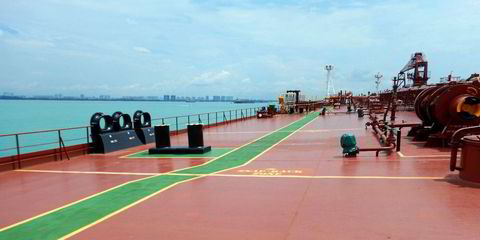The second claim against the owner and manager of the container ship that brought down the Francis Scott Key Bridge is seeking class-action status in an attempt to represent businesses and residents affected by the casualty.
The claim came as the first temporary channel was opened, allowing deep-draught traffic to pass the grounded, 9,962-teu Dali (built 2015) and the wreckage of the Baltimore bridge.
American Publishing and its owners, Baltimore residents Karen and Charles Austin, lodged the claim against manager Synergy Marine and shipowner Grace Ocean, whose ship struck the bridge one month ago.
It was the second claim in a limitation-of-liability proceeding launched by the two companies in Baltimore’s federal court to try to cap damage exposure and corral claims onto a single docket. The first was filed by Baltimore mayor Brandon Scott and other city officials.
Like the claim filed by the city, American Publishing alleged that the bridge collapse, in which six construction workers died, was a result of negligence by Synergy and Grace Ocean.
“This catastrophe was wholly preventable,” the company’s lawyers wrote in the complaint.
“Reports indicate that alarms signalling erratic power supply had been activated even before the Dali’s departure, clearly signifying its unfit state for voyage. Nevertheless, it was allowed to leave port, a decision marred by flagrant disregard for seaworthiness.”
Synergy and Grace Ocean are declining to comment on the legal proceedings, claiming that it is inappropriate to do so while the casualty remains under investigation.
In their petition to limit liability, their lawyers said the bridge incident “was not due to any fault, neglect or want of care” by the two companies or the vessel.
Lawyers for Baltimore-based American Publishing complained that the closure of the city’s port “abruptly halted a vibrant economic engine” and hurt local businesses.
“Since the disastrous allision, commercial activities in and around Baltimore have virtually come to a standstill. It could take several years for the area to recover fully,” they wrote.
American Publishing alleged that it is among the businesses that have felt the economic consequences of the bridge collapse, with much of its advertising revenue dependent on the local business community.
The publisher of United States Cybersecurity Magazine and the Armed Forces Directory estimated that its income plunged 84% in April compared with the same month last year.
“Before the bridge’s destruction, claimants’ business was flourishing, with increasing distribution and significant advertisement revenue from local enterprises in and around Baltimore,” the lawyers wrote.
“However, the immediate aftermath of the Key Bridge’s destruction saw a dramatic halt in business activities. The local business community, stunned by the event, ceased communications, resulting in a sharp decline in service calls and sales for claimants.”
The claim’s amount is not specified, although lawyers for the publisher said the class-action claims will exceed the $5m threshold.
American Publishing and the Austins are represented in the case by Smouse & Mason, Milberg Coleman Bryson Phillips Grossman, and the Lochner Law Firm.
Grace Ocean and Synergy are represented by Blank Rome and Duane Morris.
On Thursday, a unified command of US agencies responding to the bridge collapse said they had opened a fourth temporary channel on the Patapsco River.
With a depth of 35 feet, or 10.7 metres, it is the first chance for deep-draught traffic to navigate to and from the port of Baltimore.
This limited access channel will provide a window for five of the deep-draught vessels currently unable to depart the port, as well as some smaller deep-draught vessels to transit, said US Coast Guard captain David O’Connell, the lead federal coordinator for the incident.
“Meanwhile, the Unified Command personnel continue to work full speed ahead to safely and efficiently finish operations,” he said.
Among vessels inside the zone shut-in by the Dali and bridge wreckage, other than a casino boat, only Oldendorff Carriers’ 81,300-dwt Klara Oldendorff (built 2019) has a deeper draught than the new channel accommodates.






